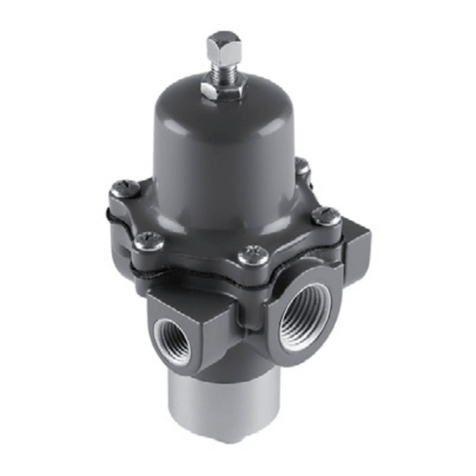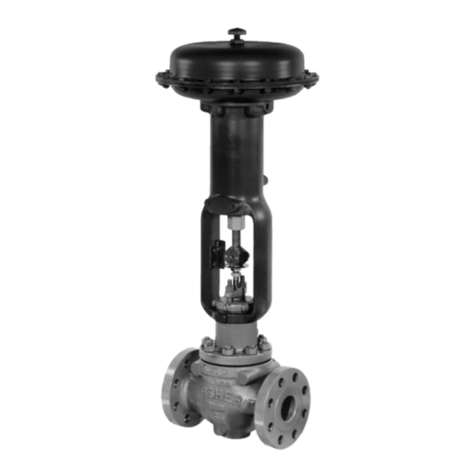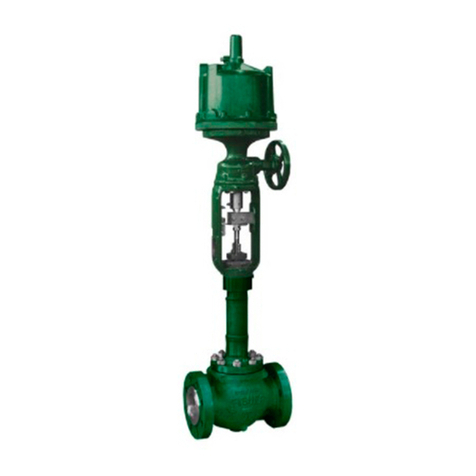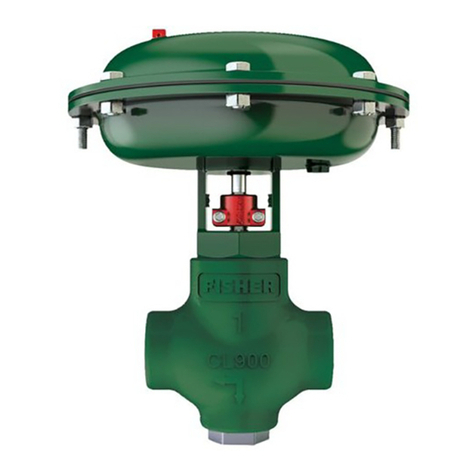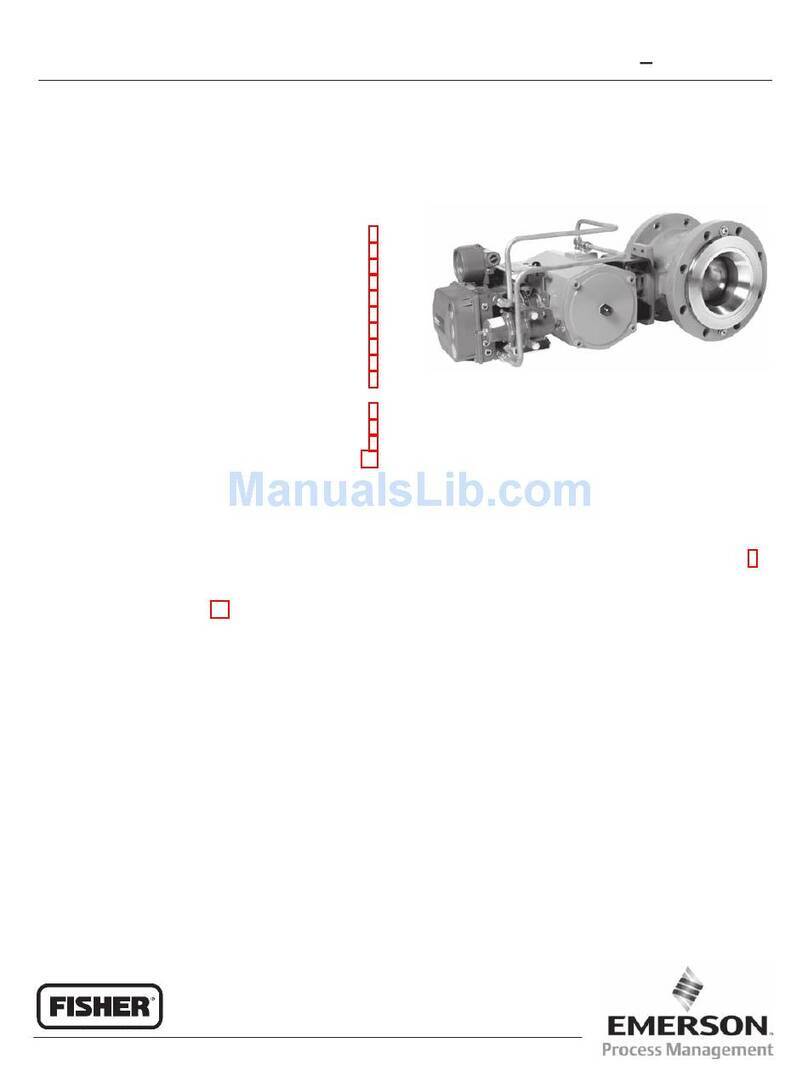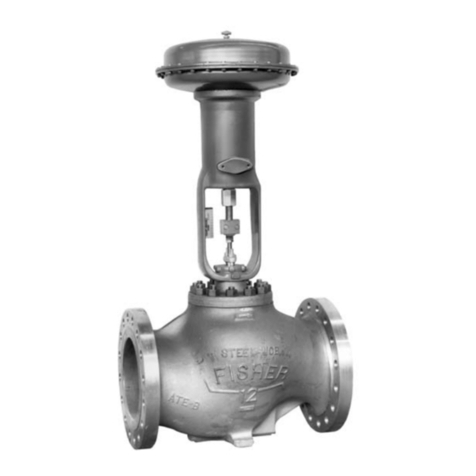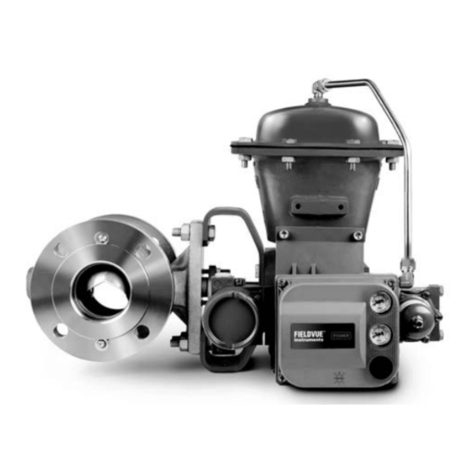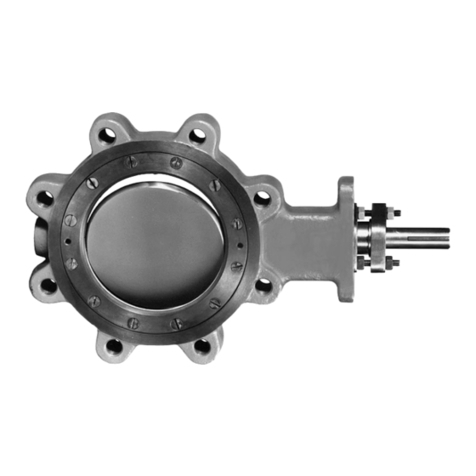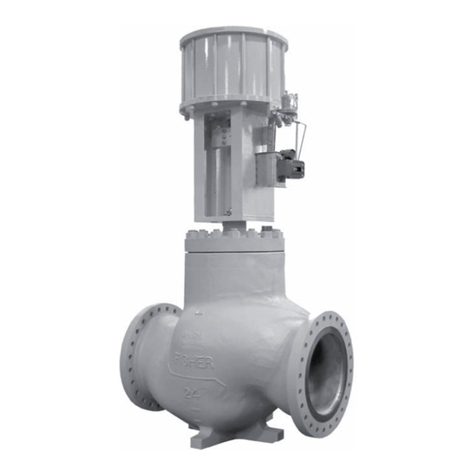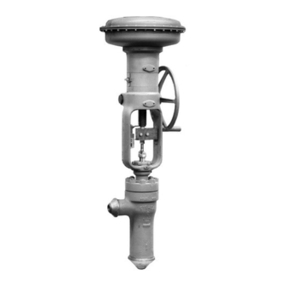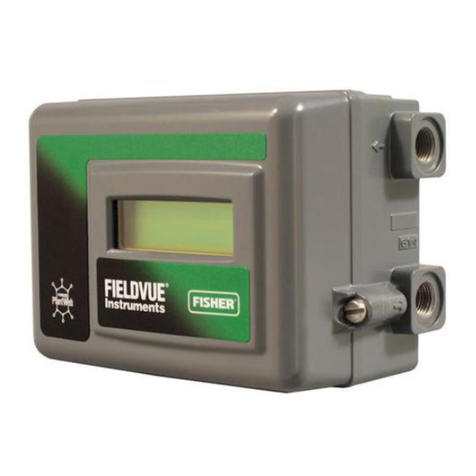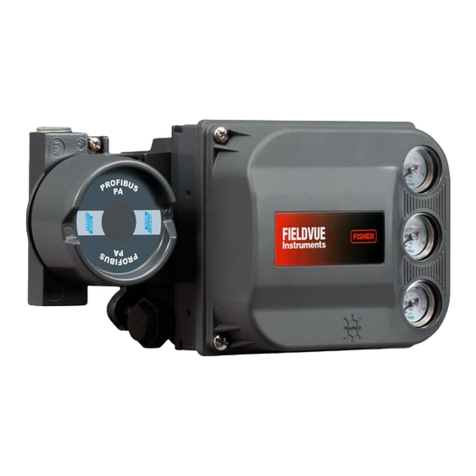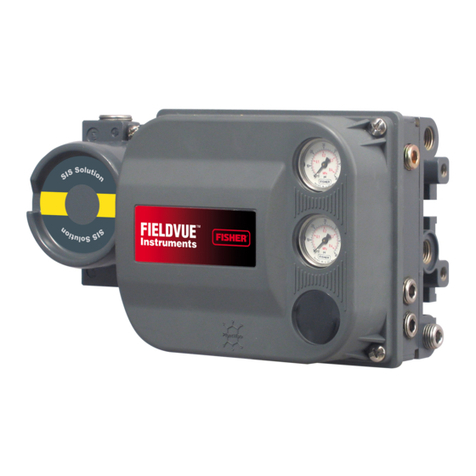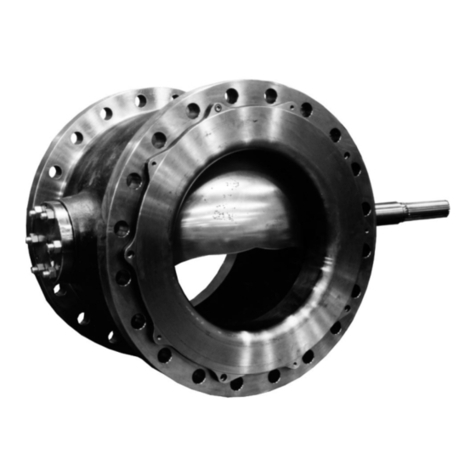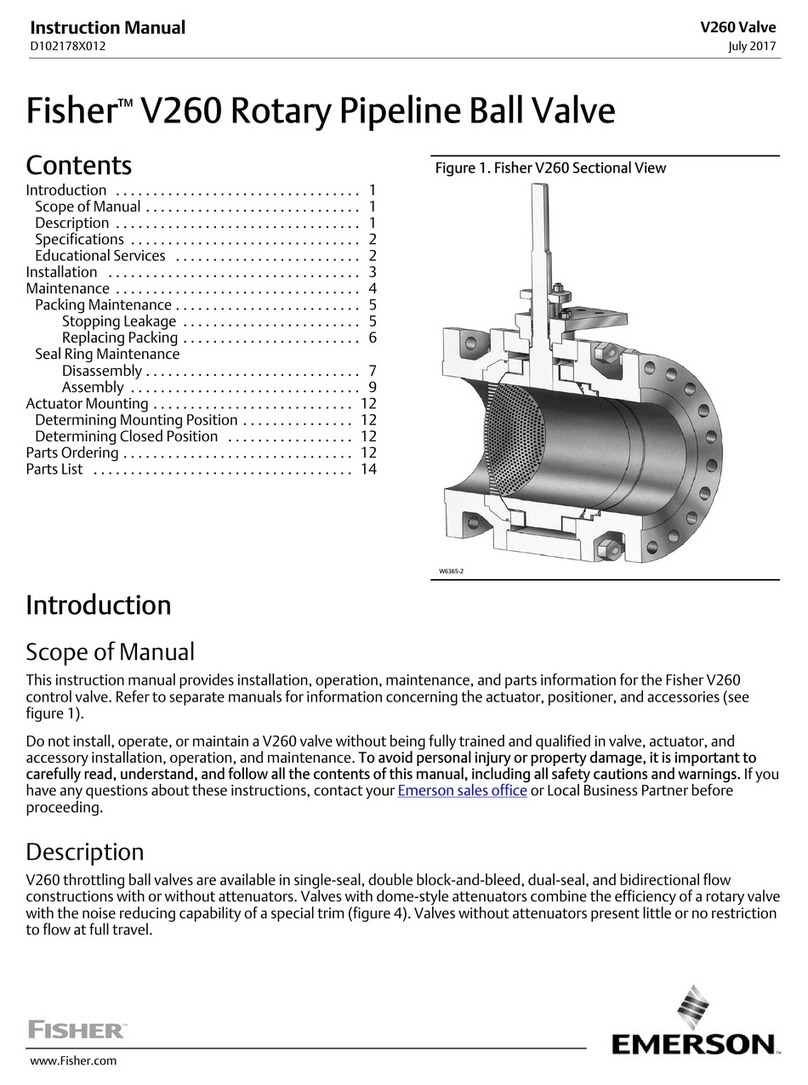
ET Valve Instruction Manual
Form 5081
June 2002
10
gaskets. A Whisper Trim III and WhisperFlo cage
retainer has two 3/8-inch-16 NPT tappings in which
screws or bolts can be installed for lifting.
6. Remove the cage or cage/baffle assembly (key
3), the associated gaskets (keys 10, 11, and 12),
and shim (key 51). If the cage is stuck in the valve,
use a rubber mallet to strike the exposed portion of
the cage at several points around its circumference.
7. For constructions other than TSO (tight
shutoff) trim, remove the seat ring or liner (key 9) or
disk seat (key 22), seat ring gasket (key 13), and the
seat ring adaptor (key 5) and adaptor gasket (key
14) where used in a restricted-trim seat ring
construction. PTFE-seat constructions use a disk
(key 23) sandwiched between the disk seat and disk
retainer (key 21).
8. For TSO (tight shutoff) trim constructions,
perform the following steps (refer to figures 6 and 7):
Remove the retainer, backup ring,
anti-extrusion rings, and piston ring.
Remove the set screws that lock the outer plug
to the inner plug.
Using a strap wrench or similar tool, unscrew
the outer plug from the inner plug. Do not damage
the outer plug guide surfaces.
Remove the protected soft seat seal.
Inspect the parts for damage and replace if
needed.
9. For all constructions, inspect parts for wear or
damage which would prevent proper operation of the
valve. Replace or repair trim parts according to the
following procedure for Lapping Metal Seats or other
valve plug maintenance procedures as appropriate.
Lapping Metal Seats
CAUTION
To avoid damaging the ENVIRO-SEAL
Bellows Seal Bonnet assembly, do not
attempt to lap the metal seating
surfaces. The design of the assembly
prevents rotation of the stem and any
forced lapping rotation will damage
internal components of the
ENVIRO-SEAL Bellows Seal bonnet.
With metal-seat constructions, lapping seating
surfaces of the valve plug and seat ring or liner (keys
2 and 9, figure 16, 17, or 20) can improve shutoff.
(Deep nicks should be machined out rather than
ground out.) Use a good quality lapping compound
of a mixture of 280 to 600-grit. Apply the compound
to the bottom of the valve plug.
Assemble the valve to the extent that the cage and
the cage retainer and bonnet spacer (if used) are in
place and the bonnet is bolted to the valve body. A
simple handle can be made from a piece of strap
iron locked to the valve plug stem with nuts. Rotate
the handle alternately in each direction to lap the
seats. After lapping, remove the bonnet and clean
the seat surfaces. Completely assemble as
described in the Assembly portion of the Trim
Maintenance procedure and test the valve for
shutoff. Repeat the lapping procedure if leakage is
still excessive.
Valve Plug Maintenance
Except where indicated, key numbers in this section
are referenced in figure 16 for standard 1- through
6-inch constructions, figure 17 for Whisper Trim III,
figures 18 and 19 for WhisperFlo trim, and figure 20
for Cavitrol III detail and the 8-inch Design ET valve.
CAUTION
To avoid the valve plug seal ring (key
28) not sealing properly, be careful not
to scratch the surfaces of the ring
groove in the valve plug or any of the
surfaces of the replacement ring.
1. With the valve plug (key 2) removed according to
the Disassembly portion of the Trim Maintenance
procedure, proceed as appropriate:
For the two-piece seal ring, The ring cannot be
reused because it is a closed ring which must be
pried and/or cut from the groove. Once the seal ring
is removed, the elastomeric backup ring (key 29),
which is also a closed ring, can be pried from the
groove.
To install a new two-piece seal ring, apply a general
purpose silicone-base lubricant to both the backup
ring and seal ring (keys 29 and 28). Place the
backup ring over the stem (key 7) and into the
groove. Place the seal ring over the top edge of the
valve plug (key 2) so that it enters the groove on one
side of the valve plug. Slowly and gently stretch the
seal ring and work it over the top edge of the valve
